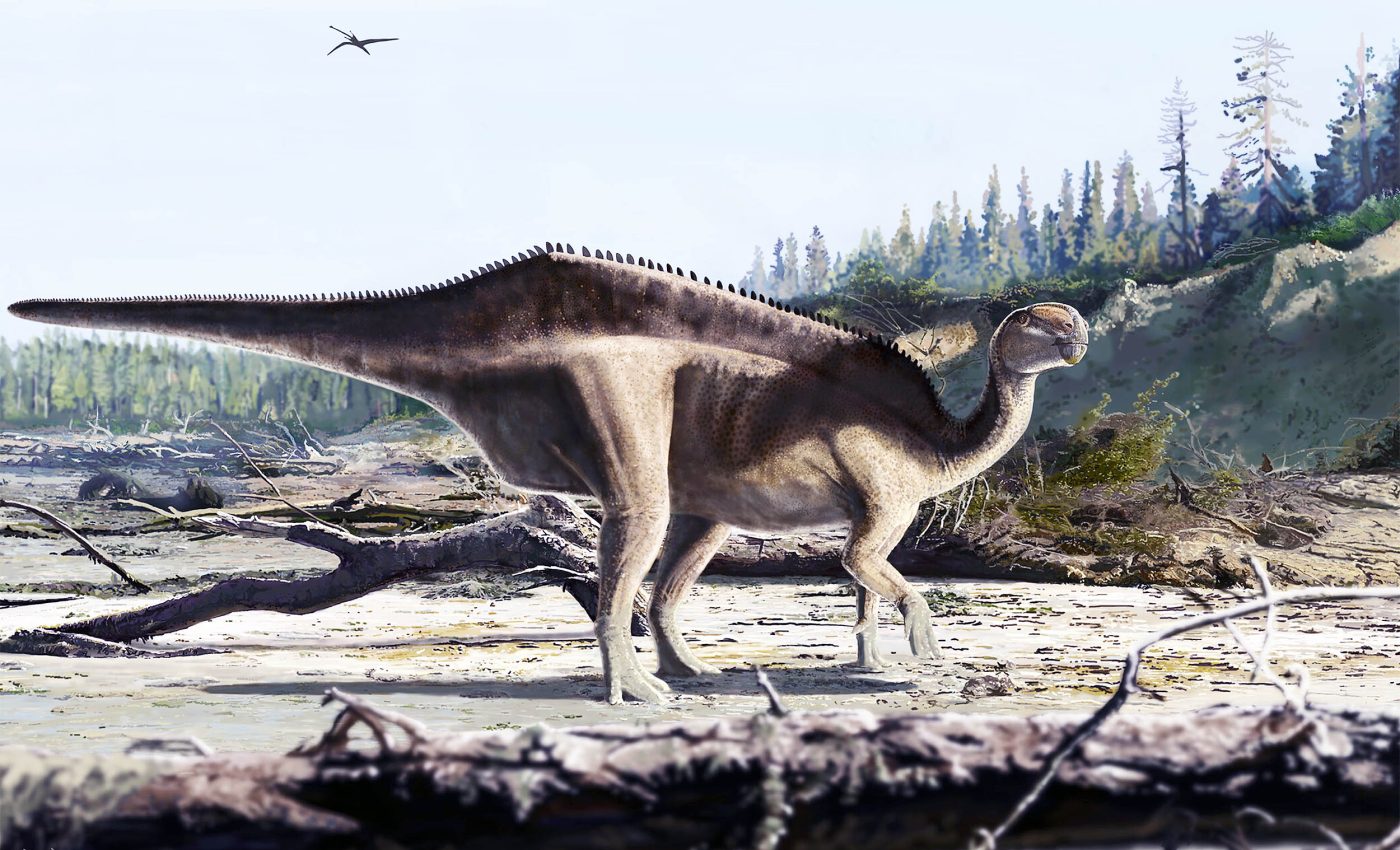
Large and 'ornate sail' on dinosaur's head may have been used for mating
For millions of years, dinosaurs have left their bones behind, waiting to be discovered in the rocks and cliffs of Earth. One of the latest to grab attention is a flashy new dinosaur, Istiorachis, found on England’s Isle of Wight.
This isn’t just any dinosaur – it’s a bold-looking plant-eater with a huge sail stretching down its back and tail.
It lived about 125 million years ago. The dinosaur’s sail wasn’t for swimming or flying – it was likely all about appearance. Think fashion statement, not function.
Istiorachis dinosaur in plain sight
For years, this dinosaur’s bones sat quietly at the Dinosaur Isle Museum. They had been labeled as part of a known species. But then, someone took a closer look.
Jeremy Lockwood is a retired doctor who is now conducting Ph.D. work with the University of Portsmouth and the Natural History Museum in London. He spent time examining old fossils and noticed something odd about one skeleton’s spine.
“While the skeleton wasn’t as complete as some of the others that have been found, no one had really taken a close look at these bones before,” Lockwood said.
“It was thought to be just another specimen of one of the existing species, but this one had particularly long neural spines, which was very unusual.”
The more he studied the bones, the clearer it became: this dinosaur was different. The tall spine bones suggested a large sail on its back – far taller than what’s seen in most iguanodontian dinosaurs.
Istiorachis was built to impress
The tall spines stretched over the animal’s back and tail, forming a sail-like structure. But what was it for? Cooling the body? Storing fat? Probably not.
“Evolution sometimes seems to favor the extravagant over the practical,” Lockwood said. “While the exact purpose of such features has long been debated, researchers believe that the most likely explanation in this case is visual signaling, possibly as part of a sexual display.”
“In modern reptiles, sail structures often show up more prominently in males, suggesting that these attributes evolved to impress mates or intimidate rivals. We think Istiorachis may have been doing much the same.”
Tracing sail evolution in dinosaurs
To test their theory, the researchers didn’t just stop at eyeballing the fossils. They created a massive database of dinosaur spine bones – photos, illustrations, and direct measurements.
Then they built a family tree of iguanodontians to see how spine size changed over time.
“These methods let us move beyond simply describing the fossil and actually test hypotheses about its function,” Lockwood said.
“We showed that Istiorachis’s spines weren’t just tall – they were more exaggerated than is usual in Iguanodon-like dinosaurs, which is exactly the kind of trait you’d expect to evolve through sexual selection.”
The new dinosaur got a name too: Istiorachis macarthurae. “Istiorachis” means “sail spine.” The second part, “macarthurae,” honors Dame Ellen MacArthur, a famous solo sailor from the Isle of Wight.
A busy fossil neighborhood
The Isle of Wight has been turning up one dinosaur after another. It’s been the site of discoveries like Brighstoneus, Comptonatus, and the fierce predators Riparovenator and Ceratosuchops.
All of this tells scientists that the island was once a lively, crowded place full of different dinosaurs living together.
According to the researchers, Istiorachis adds more color to that picture. It also hints at a larger trend in dinosaur evolution.
The stretching of backbones – called neural spine elongation – started in the Late Jurassic. But this level of stretching, called hyper-elongation (where the spine is four times taller than the vertebra), was still pretty rare.
Still, there’s a clear connection between what Istiorachis had and what some lizards today use for showing off.
“Istiorachis is a deep-time example of the same evolutionary pressures we see shaping display structures in modern animals,” Lockwood said.
Dusty bones tell a new story
This discovery wasn’t made in the field. It came from looking again at fossils sitting in a museum.
“Jeremy’s careful study of fossils that have been in museum collections for several years has brought to life the iguandontian dinosaurs of the Isle of Wight,” said paleontologist Susannah Maidment.
“Over the past five years, Jeremy has single-handedly quadrupled the known diversity of the smaller iguanodontians on the Isle of Wight, and Istiorachis demonstrates we still have much to learn about Early Cretaceous ecosystems in the UK.”
These fossils come from the Wessex Formation, one of the richest deposits of ancient land animals from the Early Cretaceous anywhere in the world.
This was a turning point in dinosaur history. Iguanodontians went from being relatively unknown in the Jurassic to becoming the rulers of the plant-eating world later in the Cretaceous.
For now, Istiorachis macarthurae stands tall – not just because of its sail, but because it shows how even fossils collecting dust can still surprise us.
The full study was published in the journal Papers in Palaeontology.
—–
Like what you read? Subscribe to our newsletter for engaging articles, exclusive content, and the latest updates.
Check us out on EarthSnap, a free app brought to you by Eric Ralls and Earth.com.
—–













